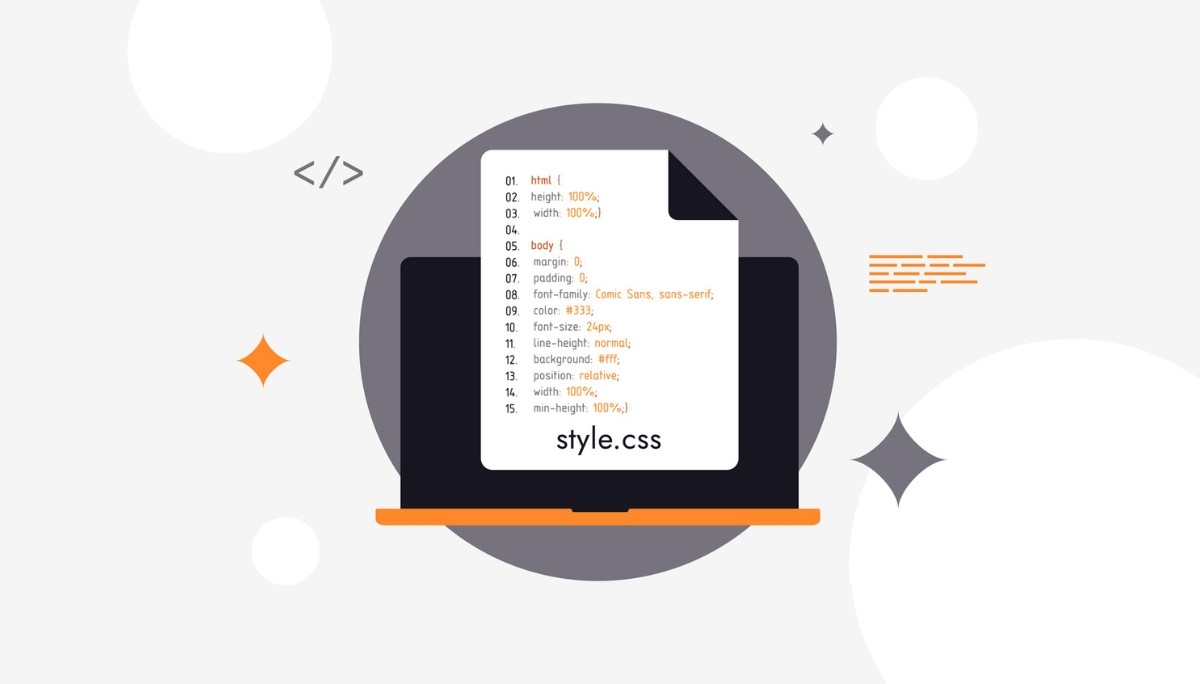TypeScript vs. JavaScript: Key Differences and When to Use Each
By
Samantha Cox
•
Jun 23, 2025
TypeScript vs JavaScript: What’s the difference and when should you use each? TypeScript offers static typing for fewer errors and better maintenance. JavaScript is dynamic, making it quick and flexible. In this article, we’ll break down the pros and cons of each so you can choose the best fit for your project. And if you’re a recruiter trying to hire engineers fluent in either (or both), Fonzi AI makes it easy to find top candidates with the exact tech stack expertise your team needs.
Key Takeaways
JavaScript is the foundational language for web development, offering dynamic typing and real-time interactivity, while TypeScript enhances it with static typing, improving code quality and maintainability.
TypeScript’s static typing enables early detection of errors and offers advanced tooling features, making it particularly suitable for larger teams and complex projects.
The choice between JavaScript and TypeScript should be based on project size, complexity, and maintainability requirements, with TypeScript allowing gradual integration into existing JavaScript codebases.
Understanding JavaScript: The Backbone of Web Development

JavaScript serves as the backbone of web development, being the most popular language used to create dynamic and interactive web pages. Its massive and active developer community contributes to a vast ecosystem of tools, frameworks, and libraries that facilitate efficient web development. The versatility of JavaScript allows it to be used for both server-side and client-side applications, making it indispensable in modern web projects.
Modern JavaScript features introduced in ES6 enhance the language by improving code readability and maintainability, significantly boosting overall developer productivity. With JavaScript, developers can create highly interactive and responsive web applications, making it a crucial skill for any web developer.
Client-Side JavaScript
Client-side JavaScript enables dynamic content and interactive features in web browsers. It allows web pages to react to user inputs immediately, enhancing user engagement without needing to refresh the page. Running in the user’s browser, JavaScript facilitates real-time updates and interactivity, essential for creating responsive user interfaces.
Moreover, JavaScript’s ability to interact with the Document Object Model (DOM) allows developers to dynamically modify the content, structure, and style of a webpage. This capability, combined with support for asynchronous programming, enables non-blocking operations that significantly improve the user experience.
Dynamic Typing in JavaScript
JavaScript’s dynamic typing allows variable types to change at runtime, providing flexibility in coding. This flexibility means developers can write less verbose code and adapt data type on the fly, which can be particularly useful during rapid development. However, this same flexibility can lead to getting runtime errors and compile-time errors, as errors are only detected when the code is executed.
While dynamic typing offers a level of convenience, it also presents maintenance challenges. Code can become harder to read and debug when types are not explicitly defined, leading to potential issues in larger codebases. Thus, while dynamic typing enhances development speed, it may introduce complexities in maintaining and debugging applications in a dynamically typed language.
TypeScript: Enhancing JavaScript with Static Typing

TypeScript is a strict superset of JavaScript, meaning it includes all JavaScript features while adding its own enhancements. It was created to address JavaScript’s growing complexity and limitations in enterprise-level applications. One of the key features TypeScript introduces is static typing, which allows developers to specify variable types, thereby reducing errors and improving code maintainability.
Static type checking in TypeScript helps catch type errors at compile time, significantly enhancing code quality and stability. These features collectively make web development projects more robust and maintainable, particularly in larger codebases, and include essential type checks.
Benefits of Static Typing
Static typing in TypeScript improves code quality by:
Enabling earlier detection of potential bugs, enhancing overall reliability.
Detecting errors at compile time, preventing many runtime errors and increasing code stability.
Providing improved tooling features like autocompletion, type annotations, and inline documentation, which enhance developer productivity.
TypeScript supports optional static typing, allowing developers to define variable types that enhance code clarity and readability. This combination of features makes TypeScript a valuable tool for maintaining high-quality code in complex projects.
Key Features of TypeScript
TypeScript offers the ability to define types using interfaces, which describe the shape of an object, detailing the methods and properties it must include. TypeScript supports interfaces and also allows the definition of optional properties within interfaces, increasing flexibility in object structures.
TypeScript classes support object-oriented programming language concepts such as inheritance and access modifiers, enhancing the ability to create modular and maintainable code. Additionally, TypeScript supports private class fields, providing better encapsulation compared to many JavaScript runtimes.
Comparing TypeScript and JavaScript

Comparing TypeScript and JavaScript reveals distinct differences that can influence project outcomes. TypeScript adds static typing to JavaScript, enhancing code maintainability and reducing errors. It provides additional features such as interfaces, enums, and advanced type-checking that JavaScript lacks.
JavaScript is dynamically typed, allowing variable types to change at runtime, while TypeScript employs static typing to enforce type constraints, helping catch errors during development. Understanding the difference between TypeScript is crucial for building reliable web applications, and TypeScript’s features can lead to more structured and maintainable codebases.
Type System Differences
The dynamic typing system in JavaScript can lead to unexpected behavior if developers are not careful with variable types. While dynamic typing facilitates rapid development, it can cause runtime errors and bugs that are hard to track down.
In contrast, TypeScript uses static typing to enforce variable type consistency, which means a variable cannot change its type after declaration. This leads to a more structured and predictable codebase, making it easier to manage large projects in a statically typed language.
Integration with Existing JavaScript Code
TypeScript can easily integrate into existing JavaScript projects, enabling developers to gradually adopt its features. Managing a codebase with both TypeScript and JavaScript involves:
Starting with small migration steps for a gradual transition.
Keeping the scope of changes small during migration to ensure easier code reviews.
Reducing the risk of introducing new errors by limiting changes.
Engaging the team in discussions about type definitions can enhance understanding and improve the quality of the migration process. Regularly updating TypeScript declaration files ensures accurate type checking for any JavaScript code, which helps prevent runtime errors.
When to Use TypeScript vs JavaScript
JavaScript is favored for its speed and simplicity in smaller projects, making it a suitable choice for quick development and prototyping. TypeScript is ideal for larger teams and projects where maintainability, readability, and type safety are priorities, ensuring a more manageable codebase.
The choice between TypeScript and JavaScript depends on factors like project size, complexity, and maintainability requirements. Ultimately, selecting TypeScript or JavaScript should align with the project’s specific needs, team structure, and long-term maintainability goals.
Tooling and Libraries in JavaScript

JavaScript supports various frameworks that streamline client-side development, making the creation of web applications faster and more efficient, including those built with vanilla JavaScript. These frameworks simplify the development of scalable and interactive JavaScript applications, even in non-browser environments, including large-scale applications.
The JavaScript ecosystem, from React to Angular, is rich with a powerful tool that enhances development productivity and allows developers to build robust applications quickly.
Popular JavaScript Frameworks
Popular JavaScript frameworks include:
React, known for its component-based architecture and efficient rendering, is a favorite among developers
Angular
Vue.js serves distinct purposes in modern web development.
Angular is designed for building dynamic single-page applications, providing a robust framework for developers. Vue.js is known for its versatility and is easy to integrate with other projects and libraries, making it a flexible choice for developers.
Expanding Horizons with JavaScript Libraries
JavaScript libraries enhance functionality and streamline the development process. They provide pre-written code for common tasks, speeding up development and reducing the need for developers to write code from scratch. Popular JavaScript libraries can further assist in this endeavor.
Libraries like jQuery enhance DOM manipulation and event handling, making them popular among developers. Ext JS is used for building high-performance enterprise-grade web and mobile applications, offering over 140 highly customizable UI components and supporting charts and D3 visualizations.
Modern JavaScript: Embracing ES6 and Beyond

ES6, also known as ECMAScript 2015, represents a major milestone in the evolution of JavaScript. The new ES6 features provide developers with more readable and maintainable code, enhancing the overall development experience.
The introduction of ES6 has significantly improved JavaScript by adding features that streamline coding practices, making it easier to code and write less, and more efficient code.
ES6 Features
Template literals facilitate easier string interpolation and enhance readability in JavaScript code. The ‘let’ and ‘const’ keywords improve variable declaration by providing block scope and preventing reassignment, contributing to better coding practices.
Arrow functions provide a more concise syntax for writing functions, especially useful in callbacks, making the code less verbose and easier to understand.
Beyond ES6
Later ECMAScript versions added features such as modules, async/await syntax, and private fields in classes, enhancing modularity and asynchronous programming. The 2016 edition of ECMAScript introduced the exponentiation operator and async/await functionality, streamlining asynchronous programming.
Such advancements keep pushing JavaScript forward, making it a robust programming language for modern web development and enhancing the JavaScript language.
TypeScript and JavaScript: A Side-by-Side Comparison
TypeScript is designed to enhance JavaScript by providing optional static typing, which helps developers catch errors at compile time instead of runtime. Both TypeScript and JavaScript share a similar syntax, allowing developers familiar with JavaScript to transition to TypeScript easily, leveraging TypeScript’s type system and the TypeScript compiler. Additionally, JavaScript and TypeScript are a powerful combination for modern web development.
JavaScript and TypeScript differ in the following ways:
JavaScript employs dynamic typing.
TypeScript utilizes static typing, which can lead to fewer runtime errors and better code maintainability.
TypeScript can be incrementally integrated into existing JavaScript codebases, allowing teams to adopt TypeScript features gradually without needing a complete rewrite.
Table: TypeScript vs. JavaScript Key Differences
Here’s a well-formatted table comparing the key differences between TypeScript and JavaScript:
Feature | TypeScript | JavaScript |
Typing | Static Typing | Dynamic Typing |
Error Checking | Compile Time | Runtime |
Interfaces | Yes | No |
Enums | Yes | No |
Compilation | Compiles to plain JavaScript | Interpreted |
Tooling | Advanced Tooling | Basic Tooling |
This table highlights how TypeScript’s features, such as static typing and advanced tooling, provide advantages in terms of maintainability and error reduction compared to JavaScript’s dynamic nature.
Advantages and Disadvantages of TypeScript
Using both TypeScript and JavaScript in a project can enhance code quality and maintainability by leveraging the strengths of each language. Using TypeScript alongside JavaScript allows for gradual adoption, making it easier to manage large codebases.
TypeScript enhances code quality by providing static typing, which reduces the likelihood of runtime errors. In various development scenarios, integrating TypeScript can significantly improve project scalability and team collaboration.
Advantages of TypeScript
TypeScript effectively addresses scalability challenges, allowing a large codebase to grow more manageably. Its benefits include:
Enhancing code maintainability by enforcing variable type consistency, which helps prevent runtime errors.
Allowing quick validation checks against a large codebase.
Reducing the risk of errors during updates.
TypeScript signals dependent code to propagate fixes when a typo is corrected, further improving code management.
Disadvantages of TypeScript
Developers transitioning from JavaScript to TypeScript may face a learning curve, taking several months to adapt. One major drawback of TypeScript is its longer compilation time compared to JavaScript. These factors can impact development speed initially, but the benefits in code maintainability and error reduction often outweigh these challenges in the long run.
Combining TypeScript and JavaScript
Utilizing TypeScript alongside JavaScript allows for a more gradual enhancement of existing codebases, enabling developers to adopt new features progressively. Combining TypeScript with JavaScript in a single project allows developers to leverage the strengths of both languages.
This hybrid approach ensures compatibility and enables teams to benefit from TypeScript’s static typing while continuing to use JavaScript for components where dynamic typing is advantageous.
Hybrid Approach
TypeScript can be used alongside JavaScript, allowing for a gradual integration process. Key points include:
Projects can utilize both TypeScript and JavaScript, enabling developers to adopt TypeScript incrementally.
TypeScript code is compiled into JavaScript.
This compilation allows TypeScript to run in environments where JavaScript is supported.
Using target-specific constructs in legacy environments ensures compatibility with TypeScript. This approach allows developers to work seamlessly within older frameworks.
Best Practices for Mixed Codebases
To effectively manage a mixed codebase, it is recommended to maintain clear documentation that highlights the differences and interactions between TypeScript and JavaScript files. Implementing linting tools that understand both TypeScript and JavaScript can help ensure code quality across the entire codebase.
Clearly separating TypeScript and JavaScript files within the project structure avoids confusion and makes it easier for developers to navigate and maintain the codebase. Adopting consistent coding standards across TypeScript and JavaScript files promotes code readability and collaboration among team members.
What is Fonzi and How It Revolutionizes Hiring
Fonzi utilizes AI technology to connect companies with top-tier engineers, transforming traditional hiring methods. Fonzi connects companies with top-tier AI engineers through a unique hiring platform designed for efficiency and quality.
Leveraging AI to streamline the hiring process, Fonzi enables quicker connections between companies and top-tier AI engineers, making it the most effective way to hire elite AI engineers today.
How Fonzi Works
Fonzi hosts recurring Match Day events to systematically evaluate candidates through structured assessments. The platform includes built-in mechanisms to detect fraud and audit for bias during the hiring evaluations.
Fonzi delivers high-signal, structured evaluations with built-in fraud detection and bias auditing, unlike black-box AI tools or traditional job boards.
Why Choose Fonzi
Using Fonzi offers several benefits:
Allows for faster and more consistent hiring
Significantly improves the speed at which companies can scale their teams
Streamlines the hiring process
Enables organizations to quickly find and hire top AI talent without lengthy delays
Fonzi makes hiring fast, consistent, and scalable, with most hires happening within 3 weeks. By connecting companies to pre-vetted candidates with relevant experience, Fonzi ensures a higher quality of hire.
Summary
Throughout this article, we’ve explored the key differences between JavaScript and TypeScript, highlighting the strengths and weaknesses of each language. JavaScript remains a versatile and widely-used language essential for web development, while TypeScript offers enhanced features such as static typing and advanced tooling that improve code quality and maintainability.
Choosing between JavaScript and TypeScript depends on your project’s specific needs, team structure, and long-term goals. For those looking to streamline their hiring process, Fonzi provides an innovative solution to connect with top-tier AI engineers quickly and efficiently. Embrace the right tools and platforms to elevate your development and hiring processes to new heights.




